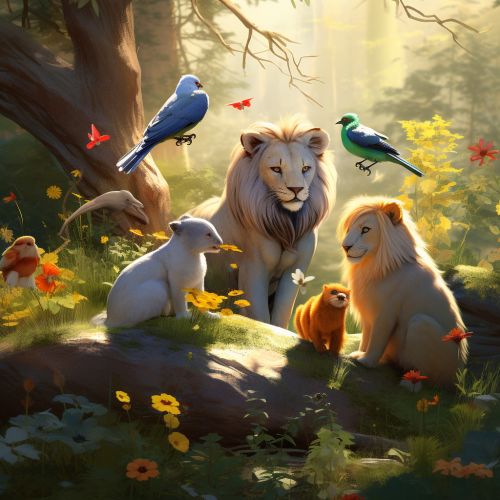Social behavior in animals
Introduction
Social behavior in animals is a complex and fascinating field of study within the broader discipline of ethology, the scientific and objective study of animal behavior. This article will delve into the intricate patterns of interaction between animals within the same species, known as conspecifics, and how these behaviors have evolved over time.
Evolution of Social Behavior
The evolution of social behavior in animals is a topic of great interest to ethologists and evolutionary biologists. It is believed that social behavior evolved as a survival strategy, with individuals within a species benefiting from cooperative behaviors such as group hunting, collective defense, and shared care of offspring. The altruistic behaviors seen in many social animals, where individuals act in ways that benefit others at a cost to themselves, can be explained through concepts such as kin selection and reciprocal altruism.


Types of Social Behavior
Social behavior in animals can be categorized into several types, each with its own unique characteristics and evolutionary advantages.
Cooperative Behavior
Cooperative behavior involves animals working together to achieve a common goal. This type of behavior is common in many species, including insects like bees and ants, birds such as crows and pigeons, and mammals like wolves and dolphins. Cooperative behavior can involve complex tasks such as building nests, hunting, and raising offspring.
Agonistic Behavior
Agonistic behavior refers to social interactions related to fighting or aggression. This can include actual physical combat, threat displays, or submissive behaviors. Agonistic behavior is often seen in situations where resources are limited, or when individuals are competing for mates.
Dominance Hierarchies
Dominance hierarchies, also known as pecking orders, are a form of social organization where individuals within a group are ranked in terms of their social status or power. Dominance hierarchies can be seen in many different animal species, including chickens, wolves, and primates.
Mating Systems
Mating systems in animals can also be considered a form of social behavior. These can range from monogamy, where an individual mates with only one partner, to polygamy, where an individual mates with multiple partners. Mating systems can have a significant impact on the social structure of animal groups.
Communication in Social Behavior
Communication is a critical aspect of social behavior in animals. Animals communicate with each other using a variety of signals, including visual signals, auditory signals, chemical signals, and tactile signals.
Visual Signals
Visual signals are often used in social interactions, particularly in species that rely heavily on sight. These can include body postures, facial expressions, color changes, and movements.
Auditory Signals
Auditory signals, or sounds, are another important form of communication in many animal species. These can include vocalizations, such as bird songs or wolf howls, as well as non-vocal sounds, such as the drumming of a woodpecker or the rustling of leaves by a snake.
Chemical Signals
Chemical signals, also known as pheromones, are used by many animals to communicate information about their reproductive status, territory, or individual identity. Pheromones can be detected by smell or taste.
Tactile Signals
Tactile signals involve physical contact between animals. These can include grooming behaviors, mating behaviors, or aggressive behaviors such as biting or pushing.
Social Learning
Social learning is a key aspect of social behavior in animals. This involves animals learning behaviors from other members of their species. Social learning can occur through a variety of methods, including imitation, teaching, and cultural transmission.
Conclusion
Social behavior in animals is a complex and multifaceted field of study. Understanding these behaviors can provide valuable insights into the evolutionary pressures that shape animal behavior, as well as the social structures and communication methods of different species.
